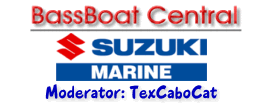I am contemplating adding a multifunction display to the boat for my 250ss. What is recommended if at all? Right now I am just running a tach with monitor functions. I feel I would get more use and info out of a c10 or SMIS, which is where I am getting a bit confused on the direction to go.




 Reply With Quote
Reply With Quote